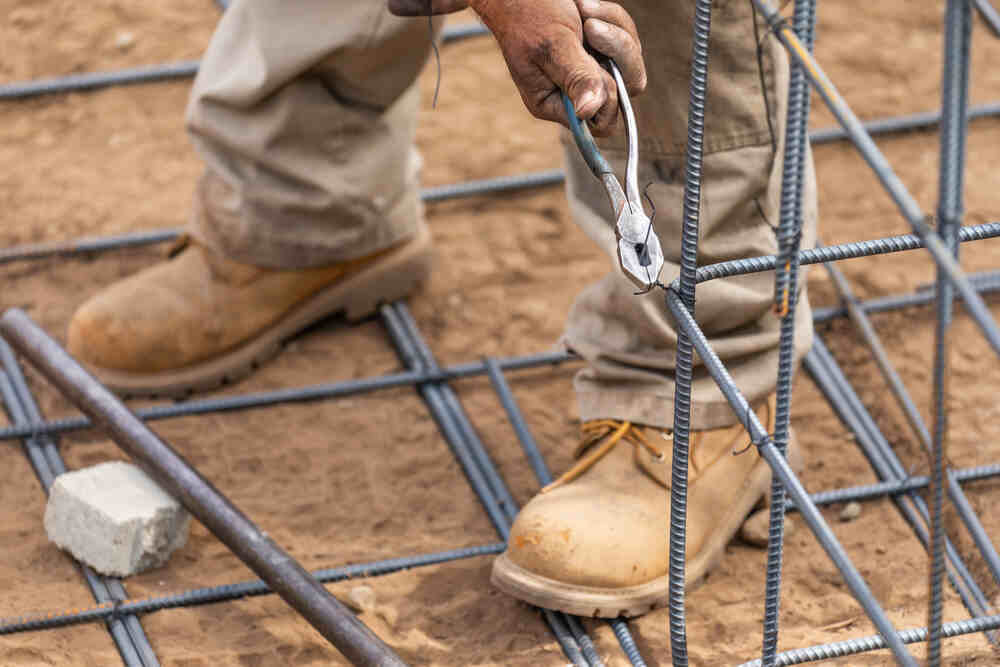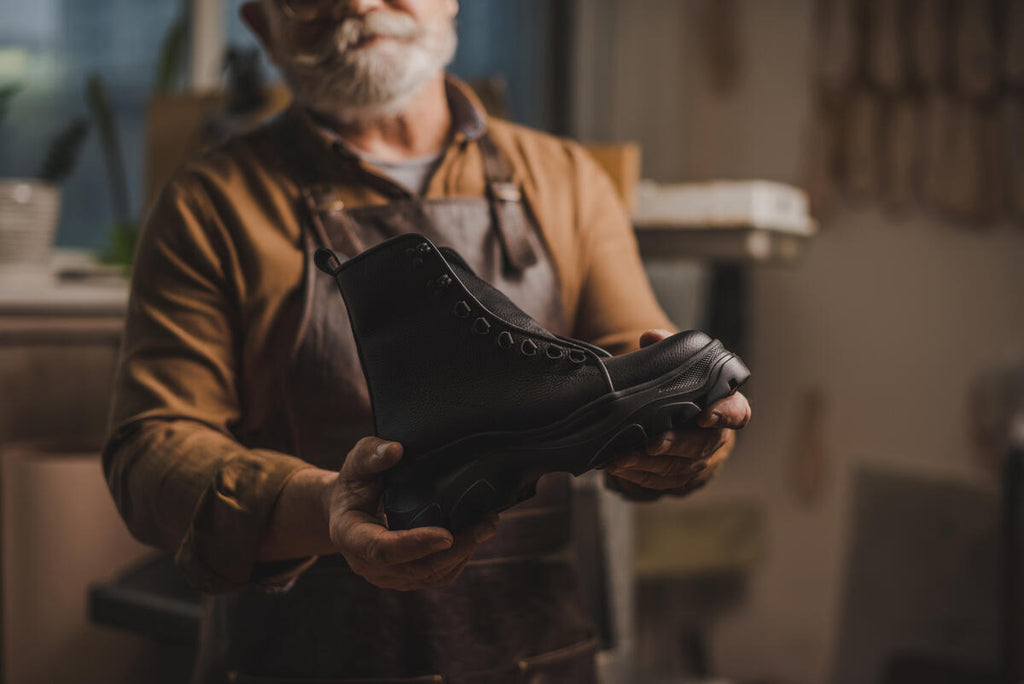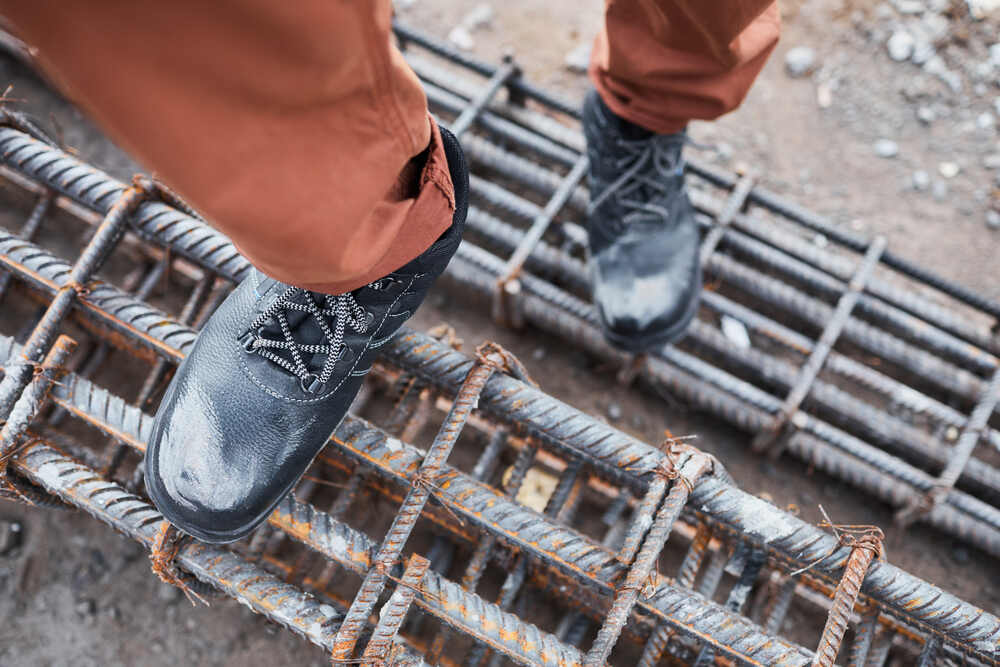As a hardworking person, you know that the right pair of work boots can make all the difference. But with so much information out there, it’s easy to fall for common myths about work boots. Believe it or not, there are tons of misconceptions floating around when it comes to protective footwear.
From the belief that steel-toe boots have to be heavy to provide protection to the idea that soaking your boots is a shortcut to breaking them in, it's easy to get confused. Let's clear the air, get to the bottom of things, and debunk some of the most common boots myths so that you can make informed choices.
The Importance of Debunking Work Boot Myths
We all know misinformation can spread like wildfire. But why is it important to separate fact from fiction in the case of work footwear?
The kinds of myths and misconceptions surrounding work boots could actually be dangerous, as they can lead workers astray, causing them to make poor choices that compromise their safety, comfort, and even their long-term foot health. That's why debunking these myths is not just for fun but crucial for making informed decisions.
By knowing the truth behind these common footwear misconceptions, you can choose protective footwear that fits the demands of your job, keeps you safe, and also ensures daily comfort and foot health.
Myth 1: Heavy Boots Are More Protective
One of the common myths, especially about traditional steel-toed boots usually worn by people working in hazardous work environments, is that they have to be heavy to be protective. In other words, the heavier the boots, the higher the level of protection they offer.
Lucky for all hardworking folks out there, this couldn't be further from the truth. When it comes to work boots, being lightweight doesn’t mean compromising safety.
The Truth:
Heavy doesn’t necessarily mean safe. Sure, steel-toe boots pack a punch and are ideal for workers in environments that require a high degree of safety, but they don’t need to weigh you down like a sack of bricks. Advancements in steel-toe design and modern materials give us lightweight options that still meet safety standards.
Modern steel-toe shoes, as well as boots with other safety features, can be both lightweight and protective. Lightweight boots are easier on your feet and reduce fatigue, allowing you to work longer without feeling weighed down. So, ditch the lead boots and let your feet breathe by getting the best of both worlds.
Why It Matters:
A heavy boot can lead to discomfort and fatigue, affecting your daily comfort and performance. Over time, wearing heavy boots can even start to impact your foot health and cause foot issues like bunions, corns, calluses, and even more serious conditions.
Myth 2: Steel-Toe Shoes Are Dangerous / an Amputation Risk
There's a scary myth that steel-toe boots can increase the risk of amputation in accidents because they're harder to cut through. Another version of this misconception is that steel-toe boots are more dangerous than regular boots and can increase the danger of foot injuries because if something heavy falls on them, the steel cap can curl in and sever your toes.
Sounds scary, right? But is there any truth to this claim? Are steel-toe boots dangerous?
The Truth:
Let’s put these myths surrounding steel-toe boot injuries to rest. Steel-toe boots are not out to chop off your toes. On the contrary, they’re designed to prevent injuries – the steel cap absorbs impact, shielding your feet from falling objects.
Protective footwear is designed to meet safety standards that reduce the risk of injuries, including amputations, not amplify them. Reputable boot brands adhere to safety standards that ensure their products offer maximum protection without compromising comfort. So, rest easy; your toes are safe and sound.
This myth was even put to the test (and busted) in an episode of MythBusters back in 2005. They can only become potentially harmful to your feet if you wear the incorrect size or wear them for too long without giving your feet a break.
Why It Matters:
Believing myths like the amputation myth about steel-toe boots being dangerous can have real, detrimental consequences. Workers might opt for inferior boots, thinking they're safer, only to find out the hard way that they're not adequately protected.
This decision can compromise their safety, especially in high-risk environments where the risk of foot injuries is elevated. In some industries, wearing steel-toed boots is not just recommended but a legal requirement.

Myth 3: Composite-Toes Don't Offer the Same Level of Protection as Steel-Toes
Heard that one before? Steel-toe boots are often thought of as the be-all and end-all when it comes to safety footwear. Although, they do their part great, it's another misconception that needs to be cleared up. Let's dig into whether composite-toe boots are really less protective than their steel-toe counterparts.
The Truth:
Composite-toe boots are no slouch when it comes to protection. In fact, they're tested under the same rigorous safety standards as steel-toe boots. Made from layers of fiberglass infused with resin, these toecaps are incredibly strong and designed to be just as protective as their steel counterparts, ensuring your toes are safe from impact and compression hazards.
Composite-toe boots also have some added benefits, depending on workplace demands. They're lighter on your feet, making them more comfortable for long hours of wear. Plus, they don't conduct electricity, reducing the risk of electrical hazards. And if you're working in cold conditions, composite-toe boots can help keep your feet warmer because they don't conduct cold like steel does.
Why It Matters:
Believing this myth can lead you to make a less-than-ideal choice when it comes to protective footwear. You might opt for steel-toe boots, thinking they're safer, when in reality, composite-toe boots are just as effective at keeping your feet safe and maybe even more suitable for your industry and working conditions. So, whether you choose composite or steel, rest assured that both types of boots offer the protection you need to stay safe on the job.
Myth 4: "One Size Fits All"
Another common boot myth is that foot size is the only factor to consider when choosing boots. While size is undoubtedly important, this belief oversimplifies the complex nature of finding the perfect fit. In reality, foot width and shape play a significant role in finding the right fit – something a pair of shoes should always accommodate.
The Truth:
Newsflash: human feet aren’t cookie-cutter - they come in all shapes and sizes. Your foot size, width, and arch type matter. Some people have high arches, while others have flat feet. Some have wide toes, while others have narrow heels. Ignoring these individual variations can lead to discomfort and potential foot problems. So, don’t settle for a generic fit. Your feet deserve personalized attention, just like you do on the job.
Some boots even come with changeable insoles or ergonomic insoles that can accommodate different foot shapes for better comfort. Plus, the function of insoles isn't just about cushioning; they also provide relief from foot injuries and improve foot health.
Why It Matters:
Ignoring everything instead of the length of your foot can lead to a poor fit, causing discomfort and pain during long hours of work. A boot that's too narrow can pinch and squeeze your feet, while one that's too wide can lead to friction and blisters. Consistently wearing ill-fitting boots that don't account for your foot width and shape can contribute to long-term foot problems like bunions, corns, and calluses, even more serious conditions like plantar fasciitis, or even structural changes.
Boots that don't align with your foot shape can also affect your gait, leading to issues with posture and potentially increasing the risk of injuries.
Myth 5: Safety Standards Are Just Red Tape
Have you ever heard someone dismiss safety standards as just red tape, a bunch of bureaucratic hoops to jump through? It's a common myth that can make some workers roll their eyes and ignore guidelines that are meant to keep them safe. Is there any truth to this, or is it just another work boot myth that needs debunking?
The Truth:
Safety standards exist for a reason. They ensure your boots meet essential requirements and keep you safe on the job. Look for ASTM F2413-18 certification – it covers everything from impact resistance, compression resistance, and metatarsal protection to electrical hazard resistance and puncture resistance.
Why It Matters:
These safety labels aren’t red tape; they’re your safety net. Knowing that you're wearing protective footwear that meets safety standards can provide peace of mind, allowing you to focus on your work without constantly worrying about potential hazards. Ignoring this and choosing regular boots based on a debunked myth can result in injuries, disciplinary actions, or even legal consequences.
Myth 6: All Work Boots Are Uncomfortable
Are work boots supposed to be uncomfortable? No! If you're wondering, "Why do my feet hurt so bad in work boots?" it's because you've got the wrong pair, not because this is your destiny.
The Truth:
This is simply not true. Work footwear, and yes, even those heavy-duty steel-toe shoes, have evolved and come a long way – they’re not the clunky, uncomfortable shoes of yesteryears, and they’re not out to crush your toes but to protect them. Today’s work boots have no problem blending functionality and safety with excellent comfort.
They even marry safety with style! Something that truly was unimaginable a century ago, but luckily, isn't the case anymore. You’ll find premium comfort features such as ergonomic insoles, moisture-wicking linings, and cushioned footbeds in most work boot models. Because today's boots truly are made for walking (and working).
Why It Matters:
Believing that all work boots are uncomfortable and putting up with constant discomfort can seriously impact your job performance and well-being. If you're constantly dealing with foot pain, not only does it make your workday feel longer, but it can also lead to more serious foot health issues down the line. Plus, uncomfortable boots can be a major distraction, taking your focus away from the task at hand and potentially compromising your safety.
Understanding that today's work boots are designed with both comfort and safety in mind helps you make a smarter choice. So, don't settle – there's a comfortable and protective pair of work boots out there waiting for you!
Myth 7: Submerging Your Work Boots in Water Will Help Soften and Break Them In
Ever heard the advice to dunk your new work boots in water to soften them up and help break them in faster? It's one of those unusual DIY theories that has been passed around. But does this method actually work? Or is it risky? Let's take a closer look.

The Truth:
Dunking your work boots in water is definitely not a recommended method for breaking them in. While it might seem like a quick fix to soften the leather or make them more comfortable, it can actually do more harm than good.
A better approach to breaking in your work boots is to wear them around the house for short periods, gradually increasing the time you spend in them. You can also use leather conditioners or boot stretching techniques specifically designed for footwear to help them conform to your feet without compromising their quality. You can check out our full guide on how to stretch leather boots for a safe, step-by-step process.
Why It Matters:
Ideas such as these can lead to unnecessary damage and reduce the lifespan of your boots. Water can weaken the structural integrity of the boots, leading to premature wear and tear. Plus, wet boots are more prone to developing mold and mildew, which can cause unpleasant odors and affect your foot health.
By understanding the proper ways to break in your boots, like wearing them gradually and using appropriate conditioning techniques, you can extend their lifespan and maintain their quality. So, the next time you're tempted to take shortcuts, remember that proper care and patience are key.
Don't Let Myths Get in the Way of Buying the Right Work Boots
Don't let these all-too-common boot myths dictate your choice of work boots. Focus on finding a pair of shoes that offers the right balance of protection and comfort. With the right knowledge, you can make an informed decision that benefits both your foot health and your job performance and safety.
Remember, your feet work just as hard as you do. Reward them with the right pair of boots. At Overlook Boots, we've got a wide range of high-quality work boots for men and women that will have your back, for real.
Now, go forth and choose wisely.
